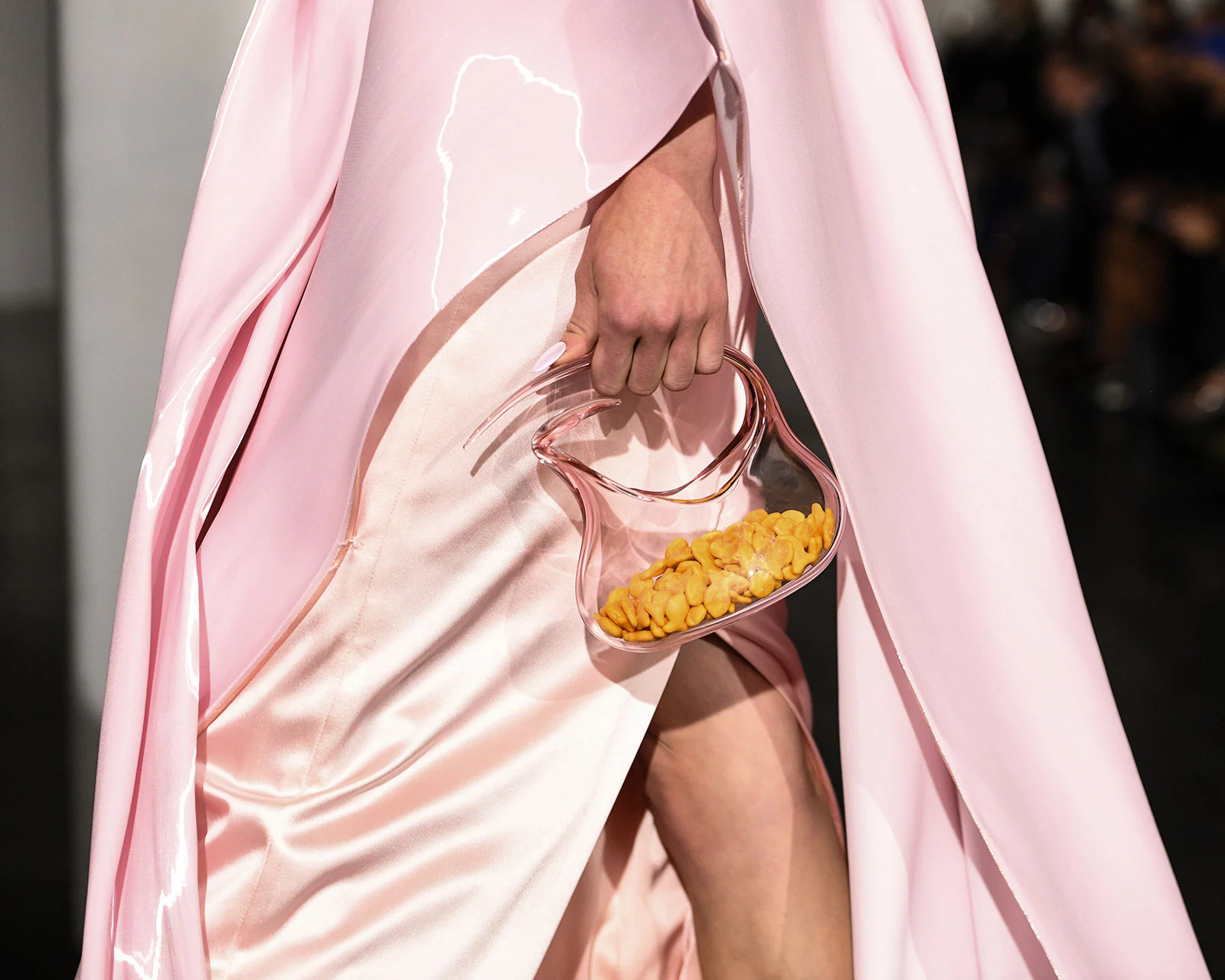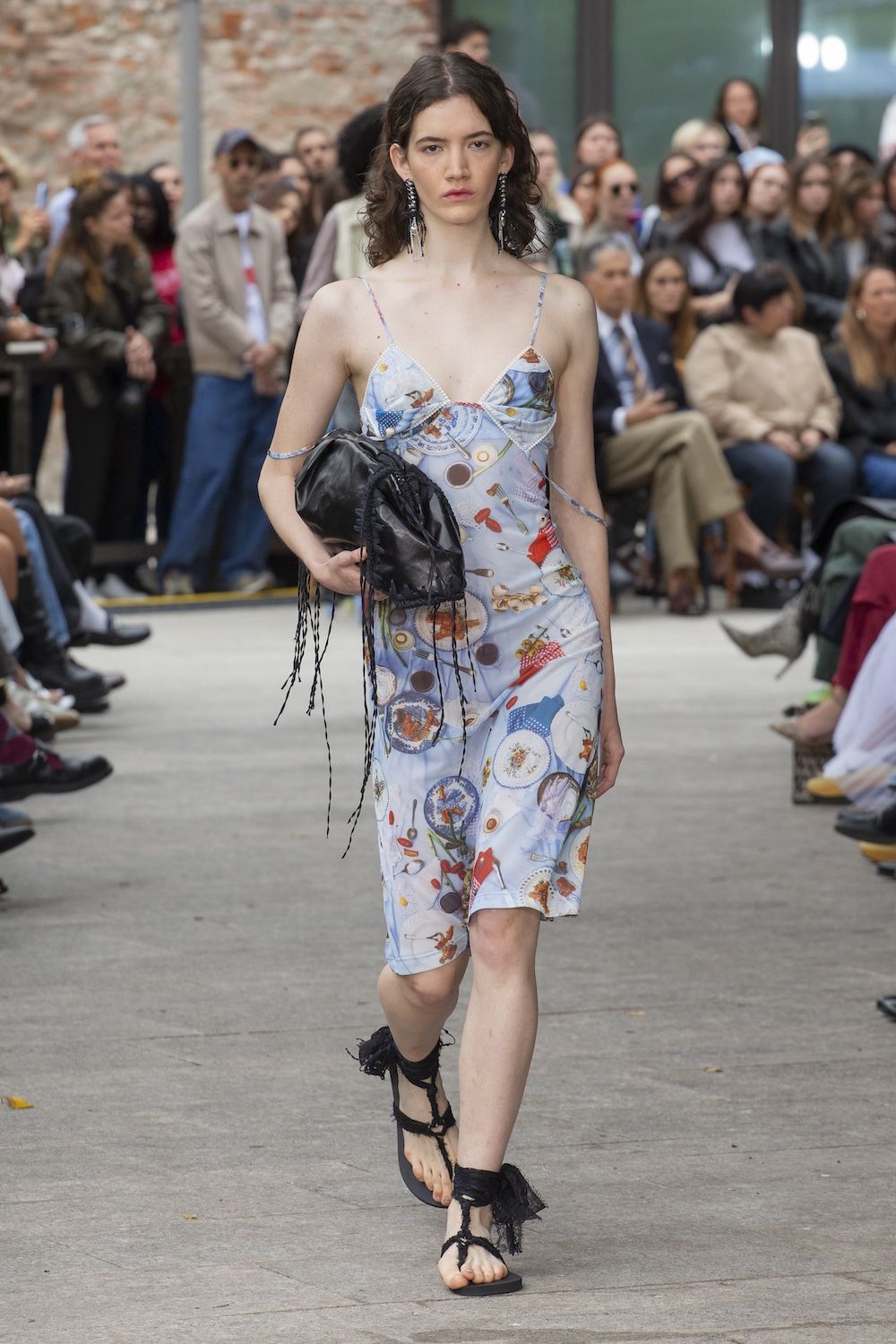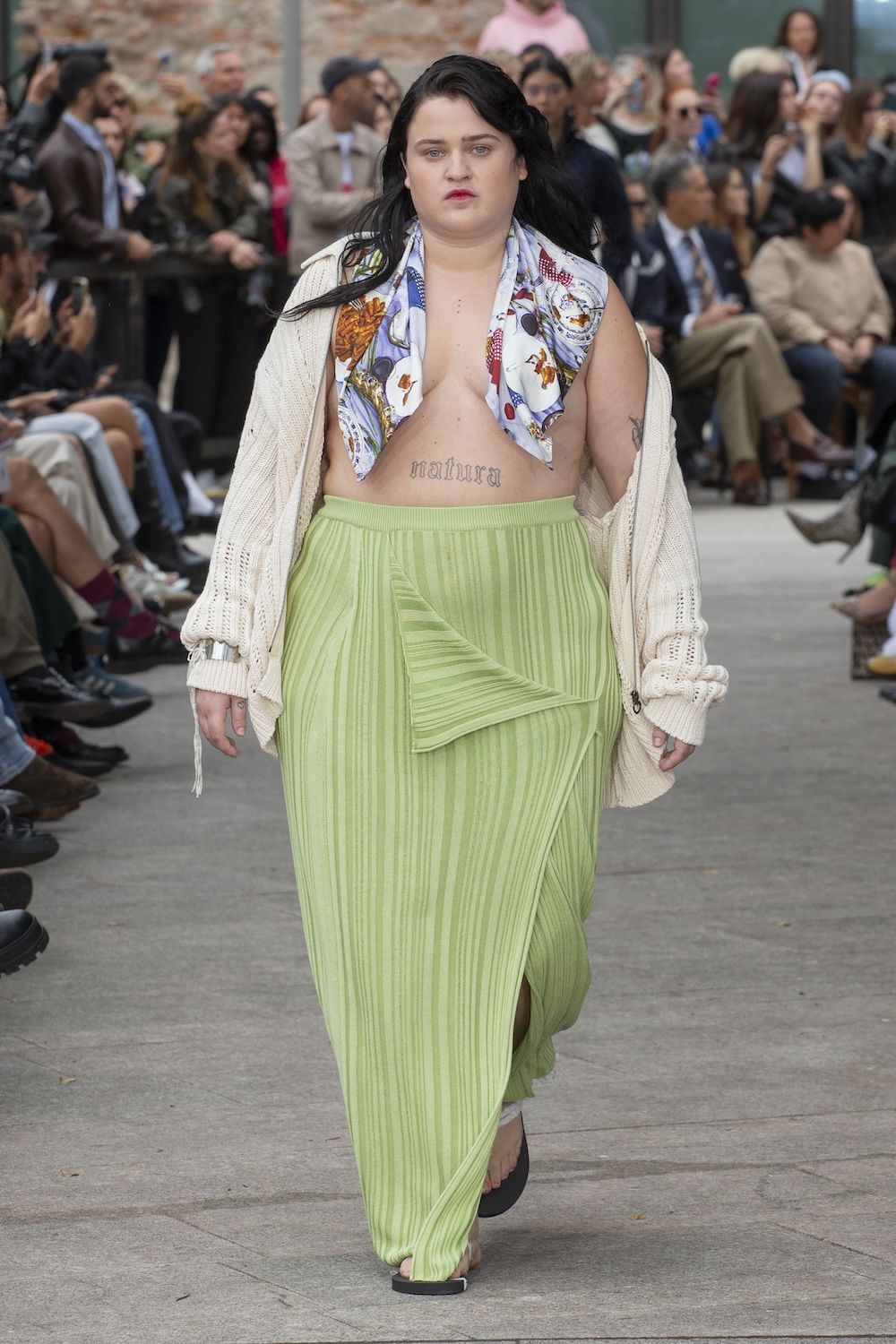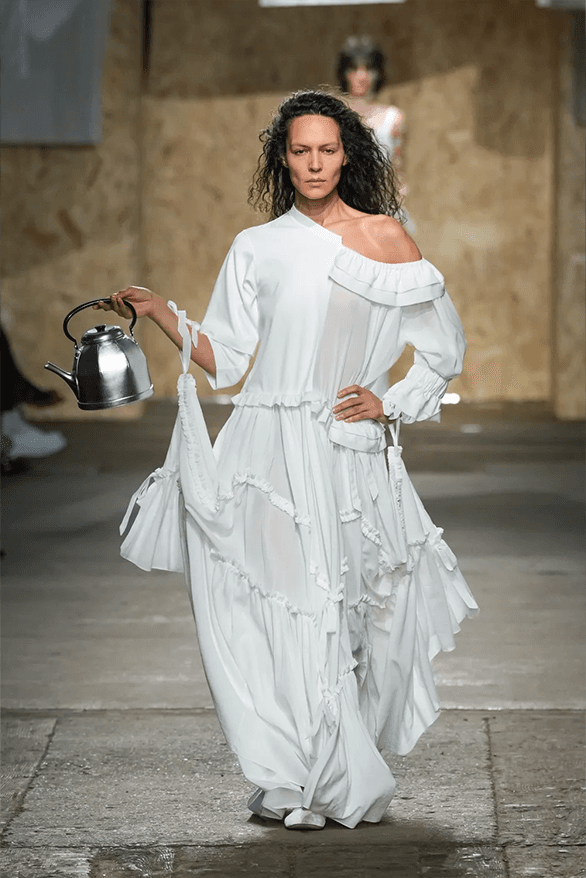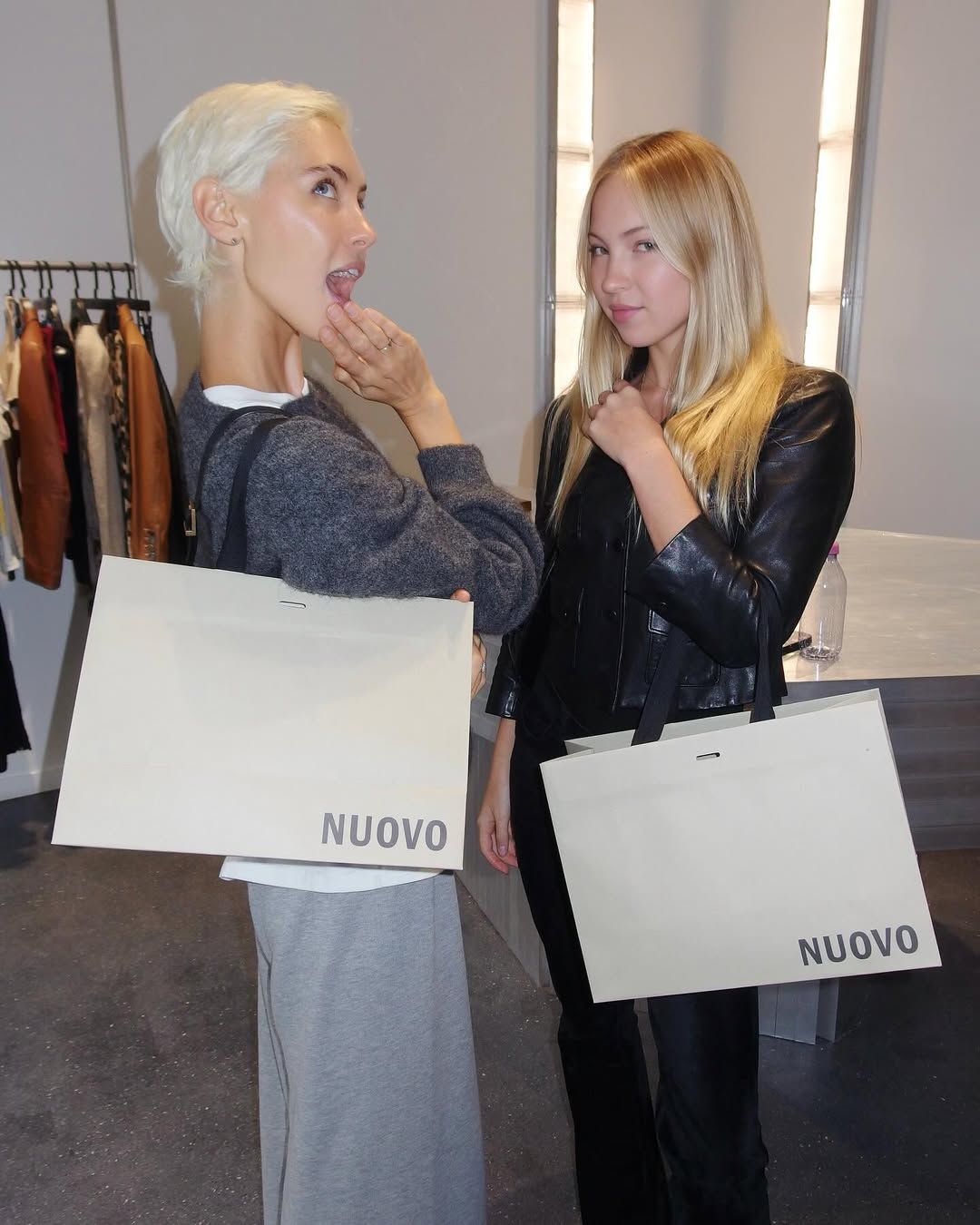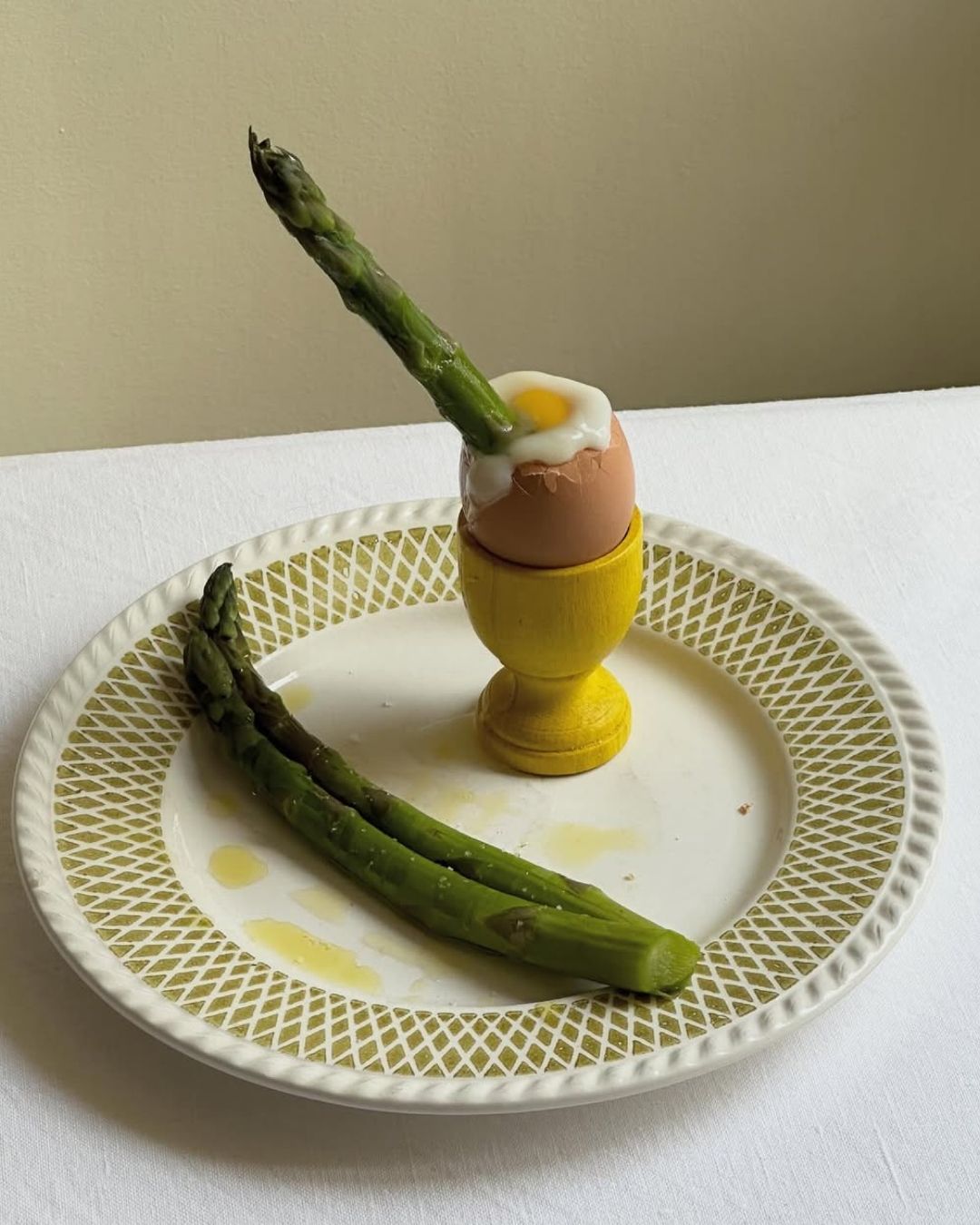
Independent brands and their passion for supermarket brands But the hunger they bring to the catwalk is for fame
Fashion now knows well the benefits of a meme on a brand's sales. With striking examples like JW Anderson's pigeon-shaped bag, the theft of Margiela's Tabi or the Brat green, it’s clear how the fashion industry is still in tune with trends. Just like the world's largest fashion houses, independent brands are gradually discovering the allure of social virality, with collaborations that are purely ironic and reference the culinary world. It’s not about panettones signed by internationally renowned chefs, but packaged sauces and cracker packets: they stuff them in bags, in pants pockets, transform them into accessories, and incorporate them into fabrics. Each does it according to their own traditions, bringing a bit of their grocery list to the runway. But why all this hunger when talking about glamour?
The hunger of independent fashion first made itself felt in New York, when Kate Barton presented on the runway a collaboration with Goldfish, the famous American brand of fish-shaped crackers. The brand sponsored the show by offering snack packs to all the guests, while on the runway a new version of the “aquarium” bag was showcased, replacing the usual fake goldfish with crackers. In London, the brand Chopova Lowena reached international fame with kilt-skirts blending punk style with Scottish tradition, but this time, they aimed to grab attention with a rather peculiar project: in collaboration with the sauce brand Helmann’s, they presented Margaret, a bag specifically designed to carry a jar of mayonnaise and a large spoon (at the show, a Victorian silver utensil), named after the inventor of the recipe, Margaret Hellmann. While we don’t yet know which brand will bring some supermarket vibes to Paris Fashion Week—although we can expect some surprises from Loewe, as they love vegetables— in Milan, Italy’s passion for good food was celebrated by Marco Rambaldi. Scarves, dresses, and tops featured prints of sky-blue set tables with a variety of half-eaten delicacies. Meanwhile, the concept was reinterpreted—we say reinterpreted because the brand has made it a distinctive trait in past years—by the non-independent brand Moschino, with new creative director Adrian Appiolaza embracing the brand’s Italian roots by having models carry oversized steel moka pots.
While other independent brands, like The Attico or AVAVAV in Milan, have focused on sportswear collaborations to amplify the media impact of their new collection, the brands that chose to partner with food brands demonstrate a keen understanding of a precise marketing strategy. These partnerships represent an unmissable opportunity for an emerging brand, both creatively and financially: with greater financial resources, it becomes easier to explore the more ironic side of fashion, which in turn leads to memes with strong media impact. Moreover, with collaborations like Kate Barton for Goldfish, Chopova Lowena for Helmann’s, and Rambaldi’s prints, brands are bringing to the runway a new generation of patriotism that resonates with Gen Z consumers, who appreciate the culinary traditions of their country (especially when it comes to Italy, England, or the United States) more than its history. Between a cracker, a set table, and a jar of mayonnaise, independent brands have realized that to attract new customers, they need to win them over through their stomachs.










































